



Priyanka Sahay
Cab aggregators and their drivers often make the news due to wrong reasons than the actual purpose they are meant to serve. Charges of misbehaviour against drivers associated with the likes of Ola, Uber and other taxi-hailing apps have become commonplace in India.
But negative headlines aside, not many of us try to go into the challenges these drivers face daily. There is an unheard side to the story, perhaps towards which people often turn a blind eye.
Moneycontrol spends a day with one such driver to understand how his ilk braves the challenges related to drunken passengers, crime, road rage and rude behaviour to carry on their daily jobs.
The Ride Begins
It is about 9:30 am. Dressed in a crisp white shirt and donning a blue turban, a 6-feet tall man greets me with a firm handshake. The demeanour of 55-year-old Gurmail Singh - a driver taxi hailing app Ola – leaves one pleasantly surprised.
Singh introduces himself as a retired Army Subedar — no wonder the respectful greeting. He leads us to his 3-BHK apartment in Bharat Vihar - an urban village in Delhi. Singh informs that he purchased his apartment for Rs 31 lakh in 2015 after he retired from the Army, serving 30 years.
Enter Singh’s home. His wife is waiting for us in the living room. Dressed in a pink and grey color salwar suit, she has covered her head with her dupatta.
The kitchen is attached to the living room. A gas stove is placed on a kitchen slab adjacent to a plastic basket full of potato and onions and steel saucepans of multiple sizes.
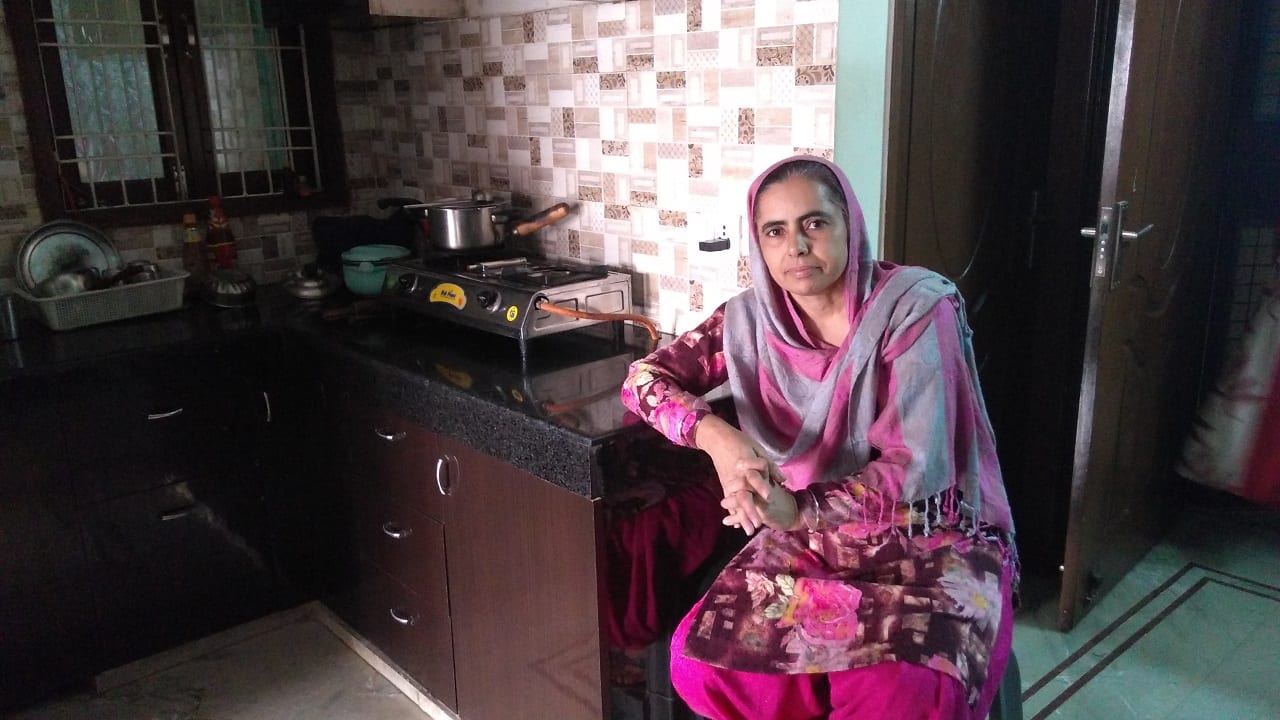
Singh’s wife doesn’t speak much as she sits on a high stool right in front of the kitchen that is adjacent to the living room.
A photo frame of Singh’s son in a karate pose rests on a wooden shelf on one of the walls of the living room. “He is good in it,” Singh says, adding that his son is also pursuing B.Com. "He has gone to attend his coaching classes.”
Singh proceeds to describe another photo which shows his much younger self with his wife with her children when a girl, clad in a blue denim and sweater, greets me. Singh introduces her as his 21-year-old daughter who is preparing for engineering exams which are around the corner.
When asked if she knows driving, the girl says she made several attempts earlier but has given up, all thanks to her father.
Why? "He sits next to me and interrupts me every second when I drive. It is irritating," she cribs, like every other daughter troubled by her over-caring father.
Singh laughs out aloud, hearing her story. A feeling of contentment is palpably visible on the faces of the parents as they listen to their young daughter speak in English.

Usually, Singh gets up at 5 am and hits the road by 6:30 am to make the most of the office rush hours. "Business is good early morning. Only after the rush hour, do we get free to take a break or a quick nap," he says.
We leave the house at 10.40 am in search of passengers in Singh’s cab, a white Wagon R, starting with a bumpy ride on a narrow, pothole-ridden lane.
At 11.08 am his phone beeps. It is the first rider of the day.
The customer calls to enquire about his location. While we are near Great Mission Public School in Dwarka, the customer says she is located at Om Vihar, a location near Najafgarh, at quite a considerable distance. The customer cancels the ride owing to the long wait time.
He keeps driving slowly and stops at a CNG station. Around 11.20 am, the phone beeps again.
A Slow Start…
This time the passenger is from a nearby location. I step out of his car as he drives away to pick his first fare of the day. I tail him, sitting in another cab from behind.
Minutes later, Singh says it was bad luck again — the customer had inserted drop location as pick up point.
It is almost noon and it doesn’t seem a good start to Singh’s day.
Fortunately for him, the next ride beeps soon enough. As Singh drives towards the location, I stop tailing to let him continue his work.
From a distance, I observe that three women, a man along with a toddler board Singh's cab. The sari-clad women were covering their faces with veils. Their luggage suggests that they may be heading to a bus station or a railway station.
The number of vehicles on the road depletes as peak hour traffic subsides, while Singh appears Gurgaon-bound.
As Singh drives away, I notice that the passengers’ bags have completely covered the rear windshield of his cab, perhaps limiting or completely blocking the view of the traffic behind.
Extra luggage is a dangerous risk for cab drivers in India. Cabs allow four passengers in a vehicle, but drivers make an exception if there is a child along.
Later, Singh informs that he dropped the family – his first trip of the day — at IFFCO Chowk bus stand. "The baby kept crying and stopped only after the man took him on the front seat next to me," Singh says. Loud passengers or wailing babies can inconvenience or distract drivers.
"Was it fine driving with the rear windshield covered?" I ask him.
"I mostly use the left and right mirrors while driving. I use the central rearview mirror only for parking," he says.
Driver vs App
Singh's next two trips consist of a priest who was travelling to perform a religious ceremony. He was followed by an Asian tourist who was to be dropped at Parsvnath Tower at Barakhamba Road in Central Delhi.
Foreign tourists are mostly nice to cab drivers unlike their Indian counterparts. However, there are some who become apprehensive after listening to news about crime incidents with foreign tourists in India.
Another driver once narrated his experience with a few African tourists. The passengers had to catch a flight and the cab was stuck in heavy traffic around South Delhi’s Kalkaji area.
The driver told the passengers that he knew a short-cut, but would take it only if they allowed him to ignore the GPS-designated route. The passengers were apprehensive and refused. Soon they realised that they could miss their flight and found no option but to trust the driver’s experience. They reached the airport well before time, the driver said.
Happy with their ride, the African tourists gave the driver a tip of Rs 500. In India, leaving a tip is a rarity in contrast to the West where it is a common gesture.
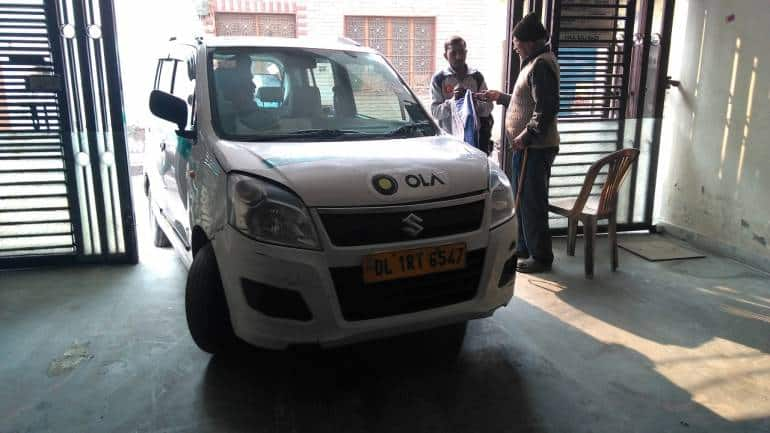
Food for Thought
It is about 2 o'clock in the afternoon. Singh and I meet again at Central Delhi. He stops his app and comes out of his car for a quick lunch. We hop on to a burger joint in Janpath. He says that his children keep insisting but he rarely comes to these places. He nibbles on his burger like a kid.
Typically, Singh brings lunch from his home that consists of paranthas, a vegetable curry with a healthy dollop of jaggery. He claims jaggery helped him stay fit even during the deadly smog in Delhi last month.
While white collar workers can afford to work inside homes with air purifiers, workers such as Singh have to brave the heat, dust, pollution and traffic for over 12 hours each day to earn their livelihood.
We are on the road again. He wipes his car with a cloth and stretches his body before switching on the app.
Singh doesn't get rides immediately though. May be because he had cancelled two ride requests before switching off the app to grab a quick lunch.
Cab apps’ algorithms take into account cancellations by drivers who tend to go off duty often and accordingly prefer more active drivers.
There are approximately 9 lakh drivers in the country on Ola's platform with 8 lakh active drivers on a given day, the company claims. Uber puts its India driver base at 4.5 lakh.
Monthly Earnings Decline
Drivers in India associated with taxi aggregation apps have also started complaining about a decline in their earnings in the past few years.
While there is a considerable increase in the number of cab drivers, aggregators have drastically reduced or removed incentives, resulting in a decline in the income of drivers.
Singh claims that his income too has reduced by 60-70% since 2015. He bought a commercial cab by selling his old private number plated Wagon R for about Rs 2 lakh.
It was 2015 and early days of taxi aggregation business in India when Singh started out his driving career. At that time, drivers used to earn more money than even a software engineer fresh out of college.
Commissions that aggregators charged from drivers were nominal. Drivers used to take home anywhere between Rs 90,000 to Rs 1.5 lakh a month. Singh claims he was able to recover the cost of his car in just the first three months.
Lured by high income potential, thousands of drivers joined cab-hailing apps business during 2015-2016.
However, the ones who joined later and bought one or more than one vehicle on mortgage are crying foul now. They have not been able to recover the price of the car. Their monthly earnings barely cover the EMI and cost of running the vehicle.
Earnings of drivers associated with Ola and Uber in India have declined by 60-70 percent compared to 2015. Rising commissions don’t quite hurt Singh as he still manages to take home around Rs 50,000 a month. Besides, he receives a pension from the Indian Army.
Driving for cab aggregators has become a big burden for drivers who have recently bought their vehicles on loans. Earlier this year, Moneycontrol reported how cab drivers in India are now selling off cars on classified websites to recover their costs.

Lunch over, what next?
After waiting for 10 minutes, Singh moves his car from Janpath road to a restaurant nearby at Barakhambha Road where he thinks there are better chances of getting a trip. He is right.
His phone beeps and two men in their early thirties arrive with trolley bags in tow. Singh helps place their luggage as they board the car. From central Delhi, the cab starts its journey towards Gurgaon.
Isn't it difficult to negotiate the traffic heavy roads of Delhi-NCR, so frequently? I ask him later.
"Drivers get used to it. But there are days when you get dizzy and feel nauseous. But the good part is that you have an option of switching off the app and taking a break," he says.
Singh, however, adds that traffic jams are a big menace for cab drivers in Delhi NCR. He admits that incessant traffic affects his health.
The men leave the cab at Radisson Blu Hotel in Mahipalpur situated near the international airport.
Singh is in a jolly mood now. He says that the two 'kids' kept bantering him throughout the hour-long trip.
"One of them asked me what compelled me to do such a hard job at such an elderly age," he says laughing out loud.
"The culprit is my white beard. I am just 55 and totally healthy to do any of these 'hard' jobs. But my beard makes me appear too old," he adds, assured of his age and his abilities.
"Are all customers this nice and warm for him?" I enquire. "Not really!" he replies.
Braving a Mugging Attempt
Singh recalls a fare he got from Mamura village in Noida. It was dark already. He was driving on a mud road with no streetlights. There were no houses in sight, just plain land, he says.
"I got scared as there was not a single person in sight. I sensed something was amiss and immediately took a U-turn," he recalls.
To his horror, a few men suddenly appeared from the dark, perhaps frustrated at having lost out on an easy prey.
Singh suspects it was a plot to mug him. It is not uncommon for cab drivers to get mugged in India.
Singh claims that even though several riders pay through e-wallets, he keeps about Rs 7,000-10,000 in cash stashed in his vehicle for an emergency.
While it is not the loss of money that troubles Singh and drivers, it is the physical harm that the miscreants are likely to inflict that is worrisome without a second thought.
While drivers like Singh prefer to ferry passengers only during the day, there is another set of drivers who prefer to ply at night. These night owls are attracted to the graveyard shift as no traffic and multiple trips make for better earnings.
Such drivers usually end their work day around 10.30 am after catering to the peak traffic hour when most people are heading towards their office.
Drunk Passengers
Driving at night also has its set of worries in a city like Delhi. Singh narrates an incident.
One of the days, a young man in his early 20s came staggering towards Singh's cab and plonked himself on the seat next to him. It was around 9 pm, at Pusa Road, a commercial district in Central Delhi.
"He reeked of alcohol and smoke. He appeared completely sloshed. I suggested to the passenger to make himself comfortable in back seat as I found it difficult to bear the stench. The passenger was offended and started hurling abuses," Singh recalls.
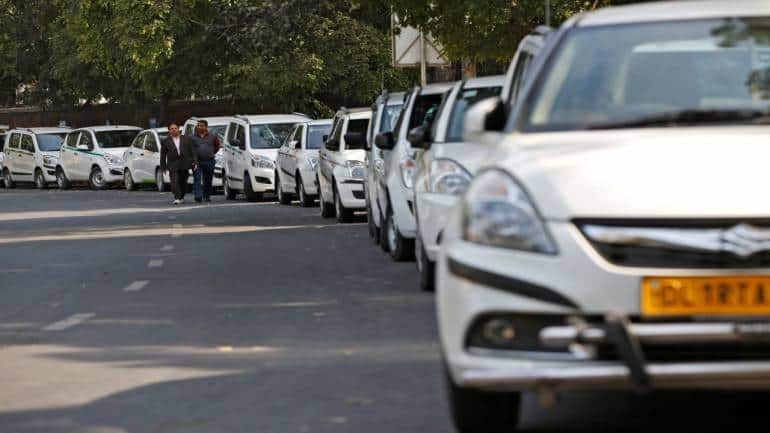 Drivers of Uber and Ola walk next to their parked vehicle's during a protest in New Delhi, India, February 14, 2017. REUTERS
Drivers of Uber and Ola walk next to their parked vehicle's during a protest in New Delhi, India, February 14, 2017. REUTERS
Singh admits he lost his cool at the passenger's behaviour and usage of explicit words. "I got off the cab and called the company’s helpdesk for drivers. After hearing about the situation, the company representative said it was okay if I wanted to cancel this ride," he says.
"I cancelled the ride and asked the passenger to get out of the cab. He, however, didn’t oblige. He kept abusing. I took his bag out and kept it on the road," Singh adds.
Fortunately for Singh, a traffic cop who was noticing all the drama, approached. Sensing trouble with a cop, the passenger quietly slipped away.
After effects of the Uber rape case on taxi aggregators
Since the Uber rape case of December 2014, drivers have become cautious. Any misbehaviour could lead to the driver getting de-rostered. The incident changed the narrative of the taxi aggregation industry in India.
There are instances when solo passengers, returning from late night parties pass-out or get sleepy in the car. It complicates things for drivers further if that passenger happens to be a woman.
Another driver tells me about an incident when a drunk woman passenger passed out in his cab.
"Often we realise that the customer has slept only when we reach the location. If the passenger happens to be a woman, we try to wake her up verbally," another driver tells me in a separate conversation.
"In this particular case, the woman did not wake up even after repeated calls. I immediately took my cab to a nearby police station and parked it there till the morning once she was back in her senses. But I lost out on the night's earnings," the driver told me.
Soon after the 2014 incident, the Home Ministry imposed a ban on taxi aggregators companies including Uber, Ola and TaxiForSure, terming them as 'illegal'.
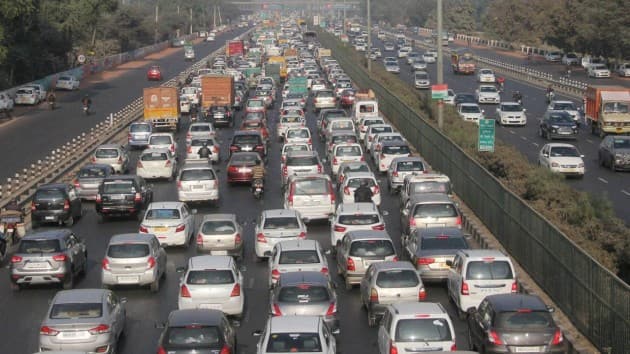 Infrastructure
Infrastructure
Failing to attract any capital, TaxiForSure succumbed. The company got acquired by rival Ola in 2015.
Uber has had to settle the case twice with the rape victim. The case was filed by the woman in US courts.
Uber was also pulled up in a California Court after a news report surfaced claiming that a top company executive had obtained the medical records of the rape victim. Uber's Asia Pacific head Eric Alexander had to quit the company amidst these developments.
Soon after this, Travis Kalanick, cofounder and CEO of world's most valued startup Uber too had to resign. His resignation came amidst other conflicts that Uber got embroiled into- including a sexist
Ola is present across 110 towns in India unlike Uber which is present in about 26 cities.
Signing Off
Coming back to our ride with Singh. I board his cab after he drops the passengers at Radisson Blu.
We are on our way towards South Delhi from Mahipalpur around 4.15 pm. Traffic has started to accumulate.
"Some drivers think that during traffic, rates improve for them. But people like me find traffic too much of a hassle on health and earnings. It is better for both customers and the drivers if rides get completed on time," says Singh. Our cab gets stuck in a queue of cars on a flyover near Delhi's Army Cantonment Area.
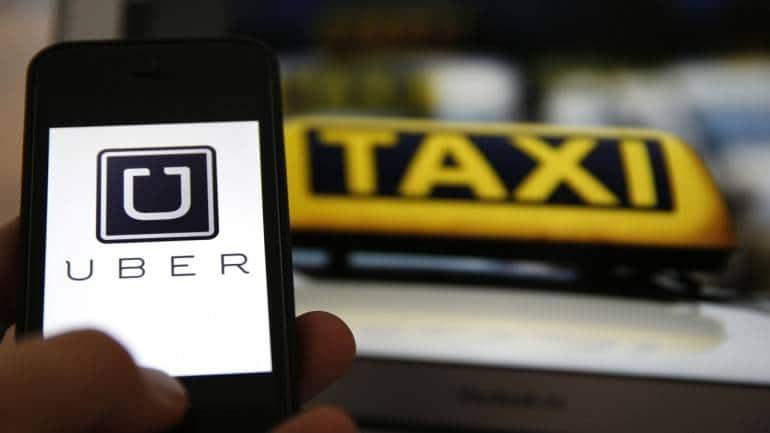 An illustration picture shows the logo of car-sharing service app Uber on a smartphone.
An illustration picture shows the logo of car-sharing service app Uber on a smartphone.
At this point, Singh gets nostalgic. He says all his life he was posted in Delhi Cantonment. Once he got a chance to apply for a 'volunteer posting' he chose Ooty, a hill town in South India, for a brief while.
Born and brought up in a small village Alampur in Punjab, that is just one of the few family outings he has had. On the other side of the flyover, he shows me a Kendriya Vidyalaya - the school where both of his kids have studied.
A father to a 21-year-old daughter and an 18-year-old son, Singh says that he will make the two of them study as much as they would want to.
"I don't want to pressure them for a job anytime soon. I am still fit to take care of my family," says the 55-year-old as he drops me near Delhi's JLN stadium.
priyanka.sahay@nw18.com

Discover the latest Business News, Sensex, and Nifty updates. Obtain Personal Finance insights, tax queries, and expert opinions on Moneycontrol or download the Moneycontrol App to stay updated!
Find the best of Al News in one place, specially curated for you every weekend.
Stay on top of the latest tech trends and biggest startup news.